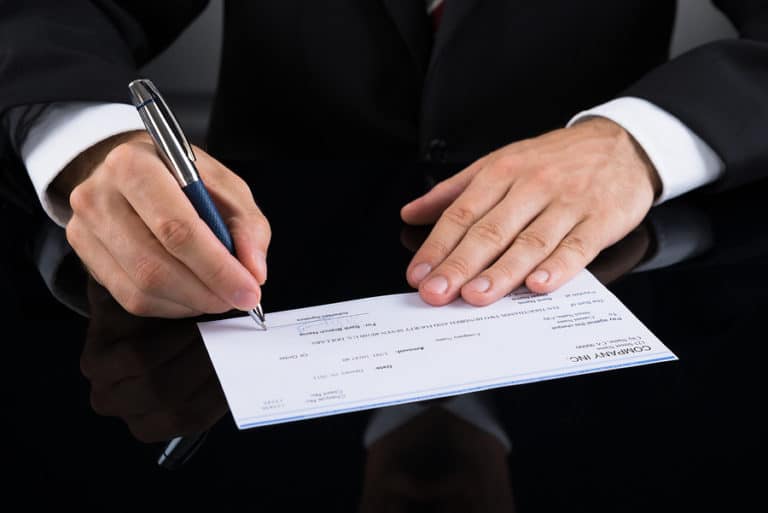Goldsmith v. Commissioner: Can An Owner of A Personal Service Based S Corporation Take Distributions Without Also Taking a Salary?
In Goldsmith v. Commissioner, T.C. Memo. 2017-20 (link) the Tax Court held that the payments from the shareholder’s S corporation were not wages. The Tax Court reasoned that the payments to the taxpayer constituted a non-taxable return of capital. The court reached this conclusion even though the taxpayer did not draw a salary for the years in question.
Background:
The taxpayer was an attorney that left the relative safety of a stable law firm to establish his own practice. The law firm was established as an S corporation, which had up to 4 associates at one point. The taxpayer experienced some early success, but his practice was ultimately unprofitable. As a result, the taxpayer got behind on his payroll taxes obligations.
To make ends meet, he personally took out significant loans that charged interest at “legal loan-shark rates.” Some of the loans were secured by the taxpayer’s home. The taxpayer did receive a massive settlement from an antitrust case, which generated a $880,000 fee for the S corporation. However, the win was short-lived.
The taxpayer distributed much of this fee in order to pay off the debts secured by his home. The business declined and the taxpayer ultimately lost his license to practice law.
In 2005, the taxpayer was indicted on multiple counts of failing to account for and pay over federal income and FICA taxes withheld from employees and failing to file individual income returns. The taxpayer plead nolo contendere and spent several years in prison.
After being released from prison, the taxpayer faced a civil audit. The issue from the audit was the central issue in this case: whether cash distributed by the S corporation to the taxpayer should have been treated as wages for federal income tax purposes.
IRS and Taxpayer’s Arguments
The IRS believed that the distributions were in fact wages, which would have increased taxpayer’s liabilities for income taxes and payroll taxes.
The taxpayer argued that the borrowed funds that he pumped in the business were loans to the S corporation and that distributions to him should have been treated as repayments of those loans.
Tax Court’s Analysis
The taxpayer kept very poor records, which made it difficult to establish the true profit and loss of the business. The opinion hinted that the losses may have been more significant if properly substantiated.[1]
“There’s no rule that an S corporation has to pay its sole shareholder a wage, especially when it’s bleeding money the way [the taxpayer’s S corporation] did. The real question is one of fact–were the payments a return of capital, repayments of loans, or wages? See Scott Singer Installations, Inc., v. Commissioner, T.C. Memo. 2016-161. We look at all the evidence. See Dixie Dairies Corp. v. Commissioner, 74 T.C. 476, 493 (1980). [The Taxpayer] bears the burden of proving that funds paid to him by [the S corporation] were for repayment of loans. See Rule 142(a).” Goldsmith at 20.
The Tax Court noted that, although there is a multi-prong test to determine whether the payments should be treated as repayment of a loan, the facts in the case were sufficiently close to the facts in Scott Singer Installations, Inc. (link) to reach a decision without going through each factor.
“The factors this court considers in such an analysis include: (1) the names given to the documents that would be evidence of the purported loans; (2) the presence or absence of a fixed maturity date; (3) the likely source of repayment; (4) the right to enforce payments; (5) participation in management as a result of the advances; (6) subordination of the purported loans to the loans of the corporation’s creditors; (7) the intent of the parties; (8) identity of interest between creditor and stockholder; (9) the ability of the corporation to obtain financing from outside sources; (10) thinness of capital structure in relation to debt; (11) use to which the funds were put; (12) the failure of the corporation to repay; and (13) the risk involved in making the transfers. Calumet Indus., Inc. & Subs. v. Commissioner, 95 T.C. 257, 285 (1990); Dunnegan v. Commissioner, T.C. Memo. 2002-119.” Goldsmith at 21, FN 8.
The Tax Court focused on item number 3. The Tax Court determined that the payments were not payments under a loan primarily because the taxpayer had no reasonable expectation of repayment. “[The taxpayer] sought funding for [his S corporation] from usurers because reasonable creditors would not finance the firm.” The Tax Court determined that it was unreasonable to expect repayment when the business was in trouble and was unlikely to repay the loans. Therefore, the distributions from the S corporation to the taxpayer were not repayments of loans. Instead, the distributions were treated as a non-taxable, return of capital.[2]
Why were the S corporation distributions a return of capital?
The Tax Court did not provide an analysis as to why the payments should not be treated as compensation for services. Based upon the facts of the case, it seems that the Tax Court was unwilling to treat distributions as wages when the business was severely unprofitable and the taxpayer contributed significant sums of money to keep the business afloat.[3]
The business has been closed, so it was relatively easy for a trier of fact to look at the totality of the economic enterprise to determine that there was no income that should be attributed to the taxpayer. And the taxpayer had already served time in prison, only to come out and face a civil audit. The language of the opinion may lead the reader to believe that the judge felt that the IRS arguments were unnecessary piling on.
It is interesting to note that during the trial, even the IRS Revenue Agent that made the adjustments seemed to believe that, with the benefit of additional work experience, her analysis did not give enough weight to the loans to the S corporation and the losses being generated.[4]
Takeaway: The Goldsmith case does not provide much general guidance for tax advisers attempting to understand where lines are between payments that should be considered wages, repayment of loans, or returns of capital. Clearly, most owners of service based S corporations should draw some wages for personal services rendered to the s corporation. However, the case does support the proposition that payments to shareholders when the shareholder has contributed significant funds to the corporation and where the corporation has consistent losses may be treated as a return of basis rather than wages.
Notes:
[1] The court also disallowed increases to the taxpayer’s basis in his shares of his S corporation for unsubstantiated payments that he made on behalf of the S corporation. However, it is not clear that this affected the outcome of the case.
[2] “A shareholder’s basis in his S corporation is increased by income passed through to him and decreased by certain distributions, items of loss and deduction, and nondeductible noncapital expenses. Secs. 1366(a)(1), 1367(a). Section 1368 dictates the tax treatment of distributions: If the S corporation does not have earnings and profits in a particular year, any distributions are generally not included in a shareholder’s taxable income. Distributions up to basis are returns of capital, and distributions in excess of basis are taxed as capital gain. Sec. 1368(b); see Truesdell v. Commissioner, 89 T.C. 1280, 1294-95 (1987); see also D’Errico v. Commissioner, T.C. Memo. 2012-149.” Goldsmith at 15.
[3] For the years at issue, the S corporation was generating gross revenue, but it was unprofitable.
[4] The IRS examiner considered the average salaries of attorneys in the taxpayer’s area. She focused on the time being billed by the taxpayer through the S corporation. However, the IRS examiner failed to give proper weight the taxpayer’s loans to the company and significant expenses that exceeded the income being generated. It is unfortunate that the taxpayer or his representative could not persuade the IRS auditor to consider the extension loans and consistent losses before reaching her conclusions. If they had, perhaps the taxpayer would not have needed to go through a full blown Tax Court trial. During the trial, she admitted that “with [her] experience now, [she] would have taken [expenses and loans] into much more consideration,” and that since then she’s learned a lot more.” Goldsmith at 19-20.




